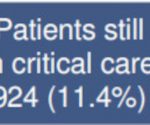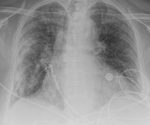UK Government’s “vaccine” rollout discovers that the younger the potential victim, the greater the refusal to be maimed or killed
There is only one surprise this week, as Public Health England releases the weekly data for “Covid-19” uptake up to 27th June: the 30-34 year old age demographic is behaving very badly, from the UK Government’s point of view, compared with every other category in the age ranges above it.
To be fair, this age group has been cause for notice before; last week’s bulletin contained these remarks:
In the age range of 30-34 years-old, 71.27% have had the jab. Previously, it was said about this group that:
The future of this group depends on how low the percentage increase drops into single figures next week – which it will very likely do. At the high end it could mean around 85% receiving the jab, and at the low end only around 77%. This represents between 0.5 and 0.9 million refusing the “vaccination”.
As it turned out, the percentage increase came in at 6%, which could very well mean that only 77% will get the first jab.
This week the percentage increase is down at 3.6%s (meaning that the cumulative total of first doses administered had increased by 3.6% of the total of the previous week) – and at a stunningly low 73.93% of product recipiency.
The reason for saying so comes from contrasting the uptake in all the other sub-50 categories, which are the ones with the most impressive refusal rates.
When the percentage increase was in the 3-percents (3-4) for the 45-49 year-olds, 80.67% of them had had a first dose. For the 40-44s, at the same point in the progress, 84.86% had had a jab. For the 35 to 39s, when the percentage increase was between 4 and 2 percent, between 75.77% and 77.98% had had a first dose.
As things stand in the 35-39 year-old group, 79.57% have received a dose of the vaccine product. It was predicted that this would grow to no more than 80% – but this needs to be revised. With the current percentage increase at 1.9% (losing 0.7 in the last week), it might get just above 81%.
However, this still represents the lowest take-up percentage of all the age-groups – until one considers the prospects for the 30-34s. A 77% take-up rate – or a 23% refusal rate – is perfectly possible in this demographic.
It’s perhaps not surprising that the younger the potential victims of the UK Government’s “vaccine” rollout are, the less likely they are going to risk being injured. And there is certainly indication that the 25-29 year-old grouping won’t buck the trend. This week it was being watched to see how far its percentage increase would fall – with the prediction being that it would emerge in a range between single figures and 15%. If this happened, then it would signal another low final take-up.
As it happened, the figure came in at 13%, with the take-up at 60.94%. Again, this is perhaps promising to render a really low final result. When the 30-34 year-old groupings percentage increase was as 12%, there had been 66.59% up-take, and it was at 68.28% for the 35 to 39s when its percentage increase was at 14%.
The telling of the same tale is perhaps also to be found in how the number of first doses given fell to 1,173,923 from 1,235,373 – which is looking now as it might have been a feeble peak. The last time that first dose administration was higher was 28th March.
All doses administered fell by 300,000 – the first not as dramatically as the second, which are the ones worth talking about in this respect.
The number of second doses administered dropped for the 5th week running, this time from 1,121,312 to 882,434. This is the lowest number since 21st March, and is a mere 39% of the value of a peak that happened at 23rd May. Again, one could argue that second doses need to catch up with the first ones, but this can’t be the case when the data shows that this week, for the first time, there were missing second jab recipients in both the 50-54 and 55-59 year old groupings. In fact, 69 thousand people in these groups combined didn’t take the jab when they should have after the proper twelve week intervening period.
From this (and using a useful comparison that can be made with the 60-64 year-old group) we can suspect that the final percentage of people in their 50s who will be second jab recipients will around 3-4 percentage points less than the figure for the first. This means that second doses, standing at 86.07% for the 50-54s, and 92.58% for the 55-60 year-olds, will hit a maximum at around 88% and around 94% respectively.
As has been explained and demonstrated before, of course, it is the under-50s where the impressive refusal rates occur, and it is going to be really interesting to see how the 40-49 years old group performs in terms of second dose recipiency. Currently standing at 47.73% for the 40-44s, and 59. 24% for the 45-49s, these final up-take percentages are threatening to be seriously low.
Some of the data one might use to get a better picture is from Public Health England spreadsheets where all the under 50 year-old is gathered together under one category title – so it can’t be done. However, it is possible to estimate that there were 2,124,362 people in the 45-49 year-old group who had been vaccinated with one dose at 4th April. This means that, this week, there were 76 thousand in this group having the second dose sooner than the proper twelve week intervening period. This in turn signals that very soon, perhaps in a fortnight, there will missing second dose recipients in this category (and at that point we will be able to compare the data as it is filtered out in the spreadsheet reports).
At this stage, the best we can do is see that, because the missing doses scenario in this demographic is looming when the up-take percentage is 59.24%, there is good reason to hope for a very impressive rate of refusal. The demographic against which a best comparison could be made is the 50-54s, where at around about the same stage in lifetime of the group, the uptake was between 67.9% and 78.73%. At a rough estimate, we might be looking at a final 80% take-up, 6% less than those who took the first dose.
If all goes according to the patterns already established, second dose refusal will only increase as the age groupings get younger, so future data releases are eagerly anticipated for this good news.


















